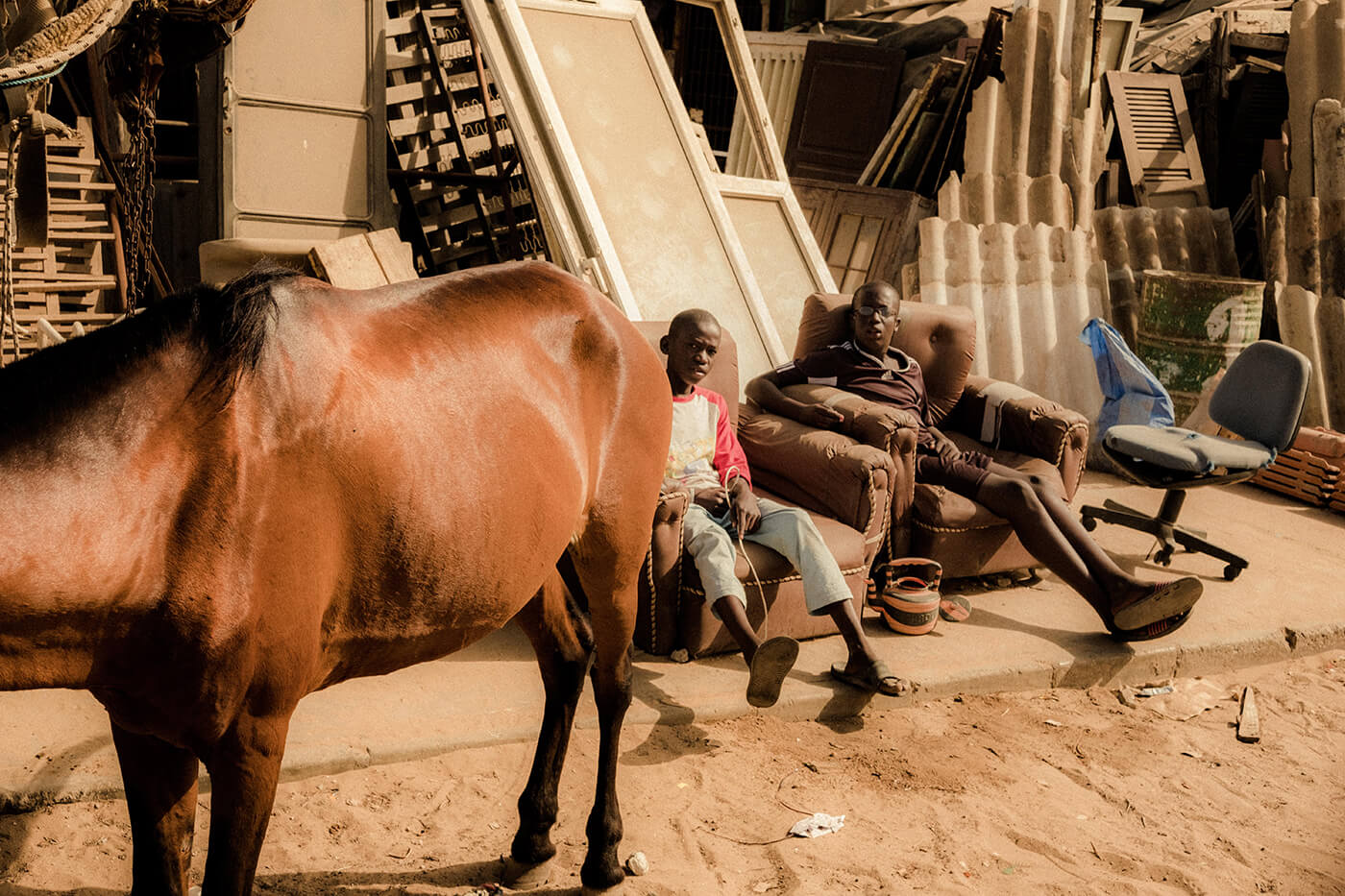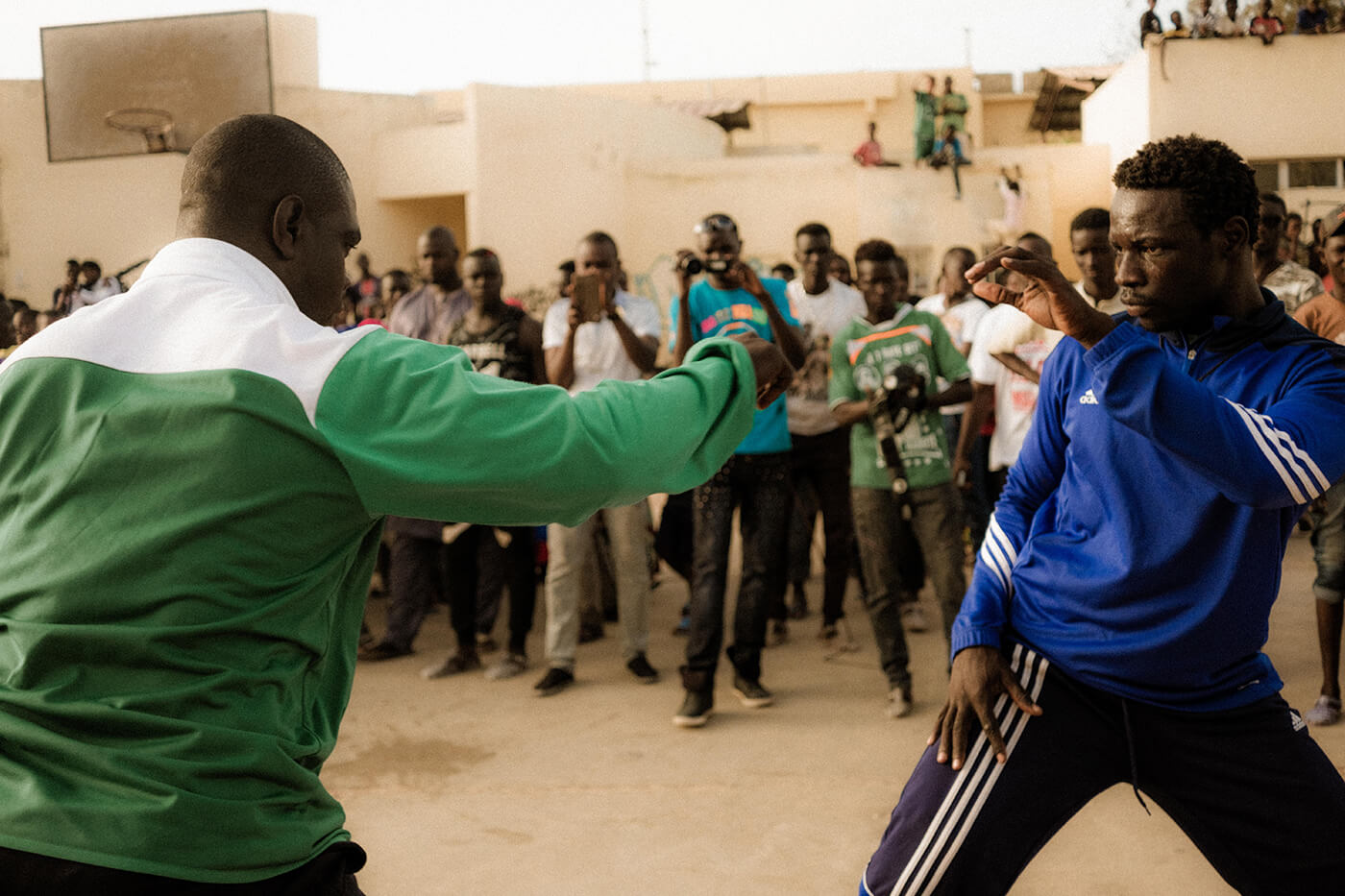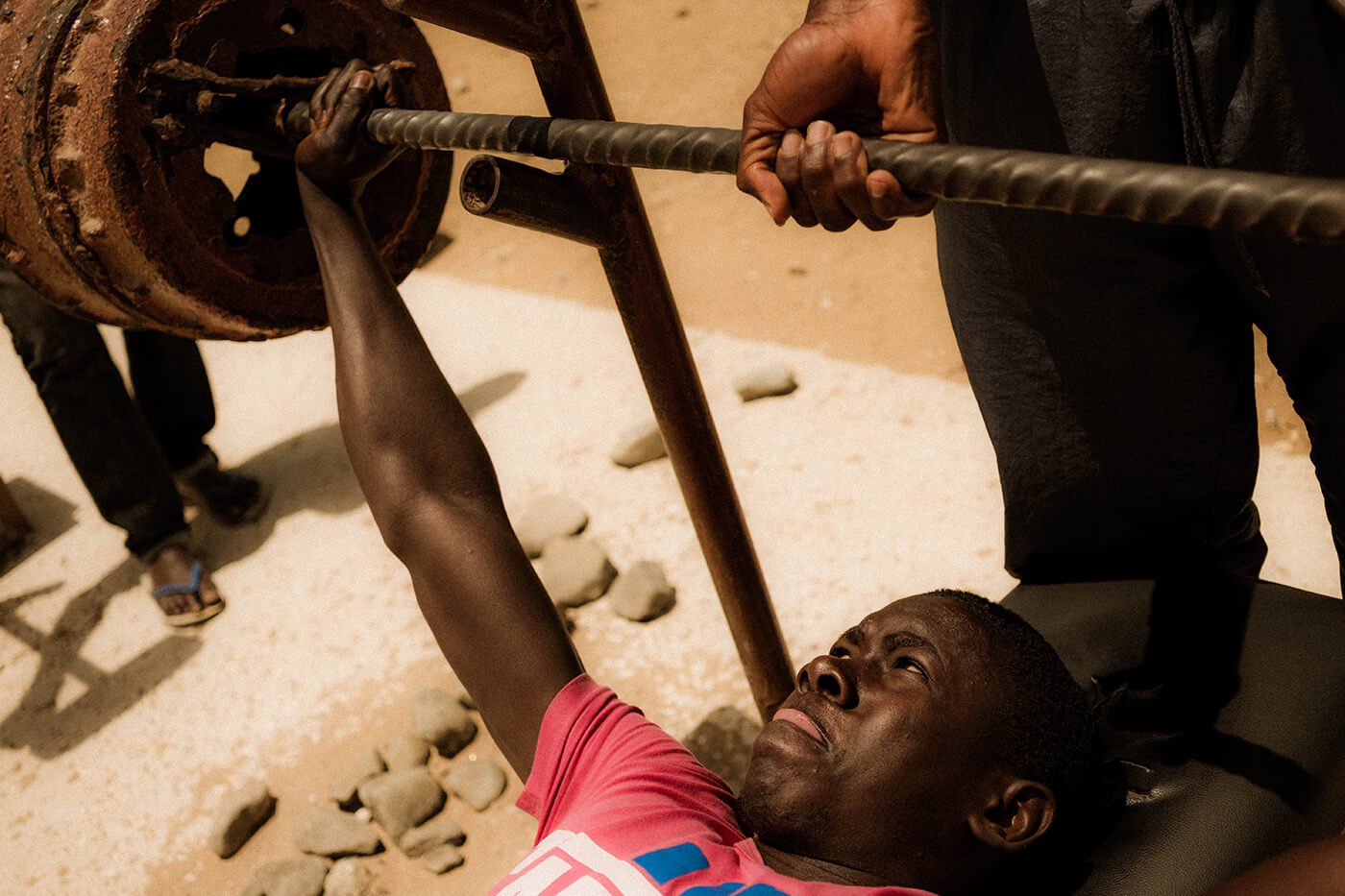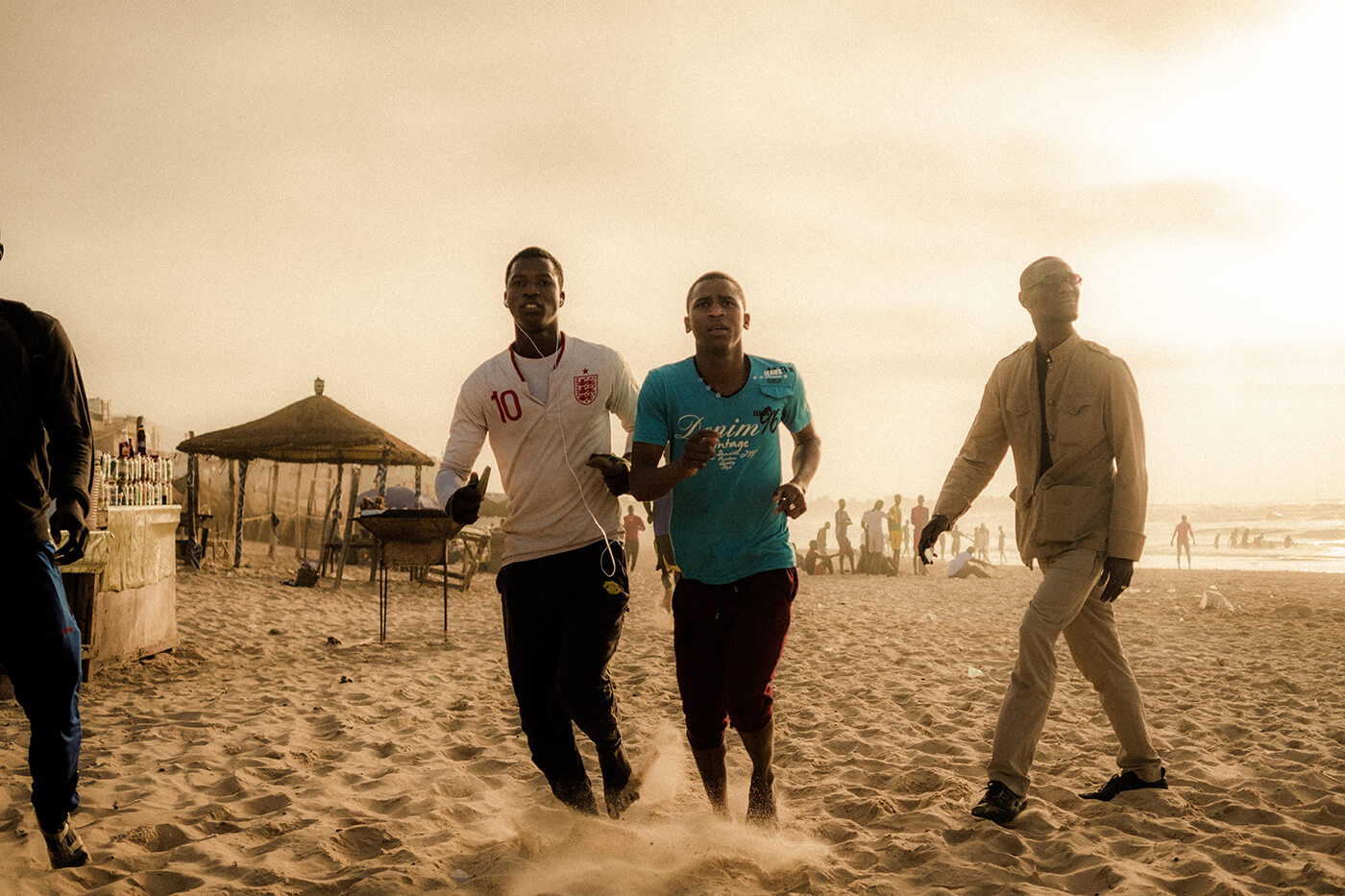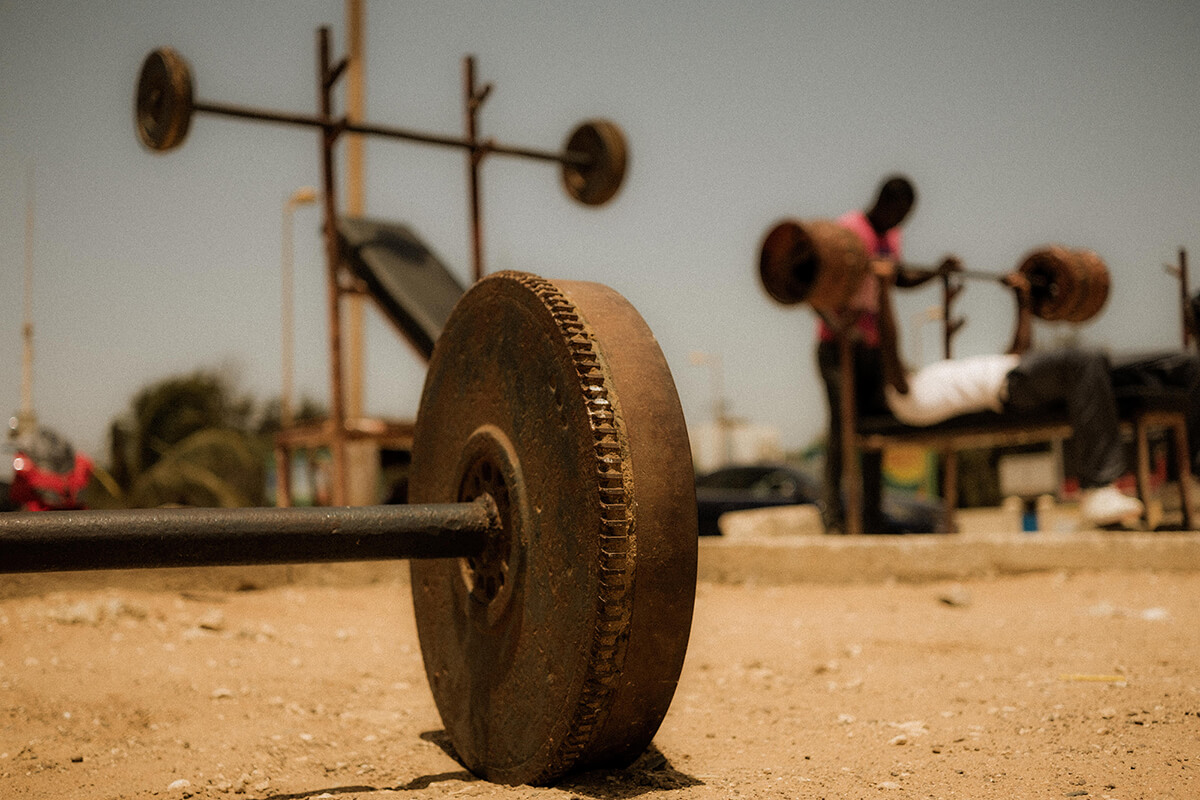INTERVIEW
Where the Camera Starts and Ends
WITH MARTIN GASCH
An interview with Martin Gasch
“You need to find out what kind of mood you need, where the camera starts and where it ends and most importantly, what information is better to hold out of the frame.”
Martin Gasch won our Humans of the World competition with an arresting image that judge Rachel Segal Hamilton described as speaking “to themes of female social status, of crowd psychology, of seeing and of being seen”. Keen to know more, we asked Martin about the image, his trip to Senegal where it was taken, and how photography complements his profession as a cinematographer and filmmaker…
Dear Martin. Firstly, congratulations on winning our Humans of the World competition. What did you make judge Rachel Segal Hamilton’s comments?
Her perception reveals some deeper thoughts about group behavior and psychology of people. I also like that she notes the presence of the camera and the possibly important influence it has on the group.
Can you tell us a little bit about the image, the circumstances behind it, and the story you wanted to tell with it?
As well as my filming camera, I often have a small Fuji camera on me. This allows me to quickly take a photo when something attracts me. As a journalist, I attended a Senegalese „Laamb Fight“ near the capital of Dakar for the first time. The women you look at are VIP guests sitting very close to the fighting area. First, they drew my attention because they just looked beautiful, with their various colors and jewelry and I started filming them. They all seemed a little “pompous” in their
behavior. Then I took the photo of the group. I realized that the young woman in the center was looking a bit sad in a way. Later I realized that the look of that young woman pulls me in and challenges me to search and interpret what is going on with that group in the frame. What is their role here and what makes them so absent and serious?
And perhaps you could share and tell us about one or two other images from that same body of work?
The Senegalese are very proud of their Wrestling Sport. In fact becoming a famous fighter is one of the few ways to get out of poverty. Many young man around the city and at the beach will practice and train with the dream of getting famous. In the image of the man in blue looking into the lens, you see a young next-generation fighter in training. In the image taken at night you see a Laamb-fighter preparing (DSCF3327). Thousands of young men are doing sports and training to compete with each other.
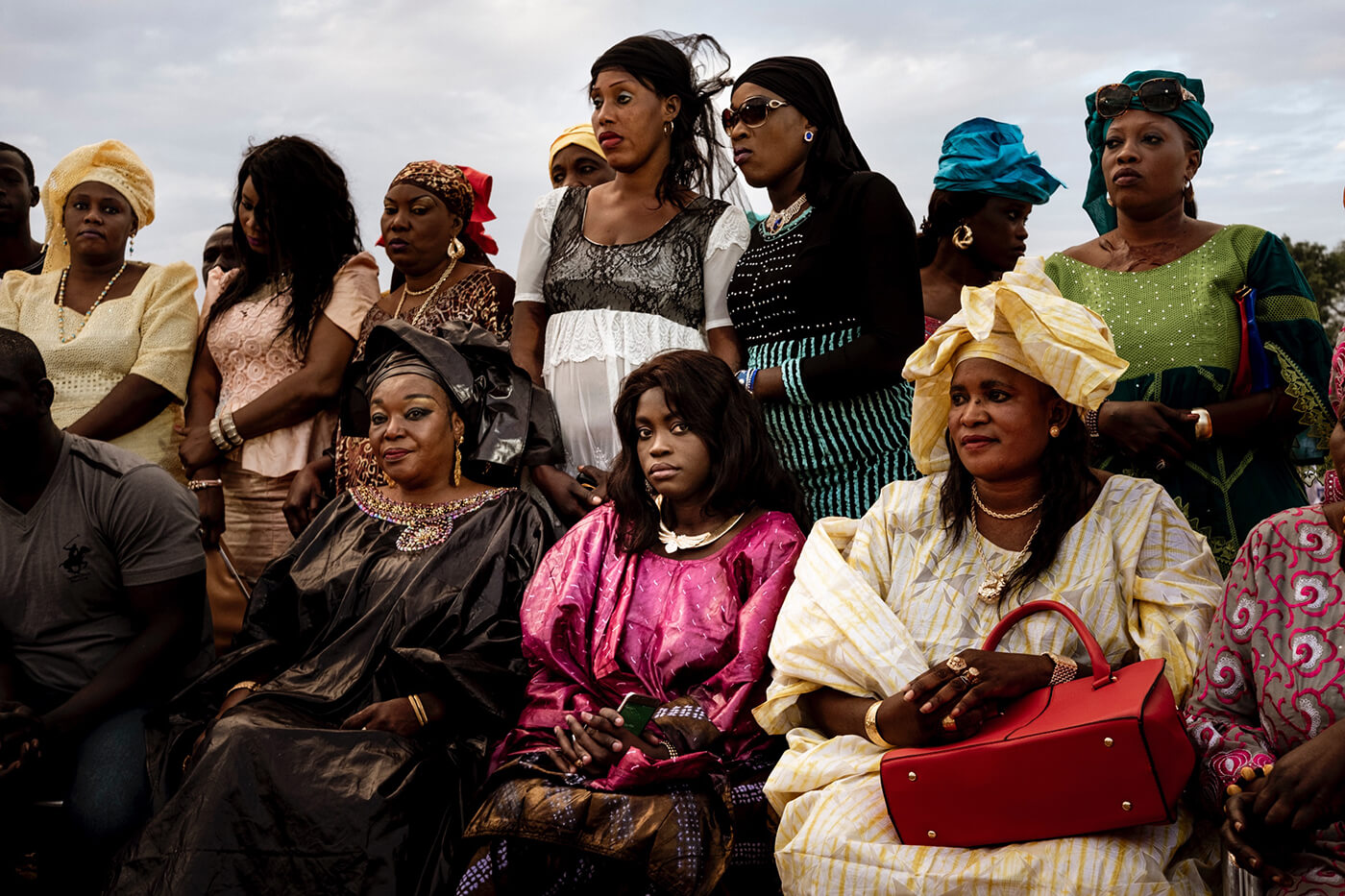
MARTIN’S WINNING IMAGE FOR HUMANS OF THE WORLD
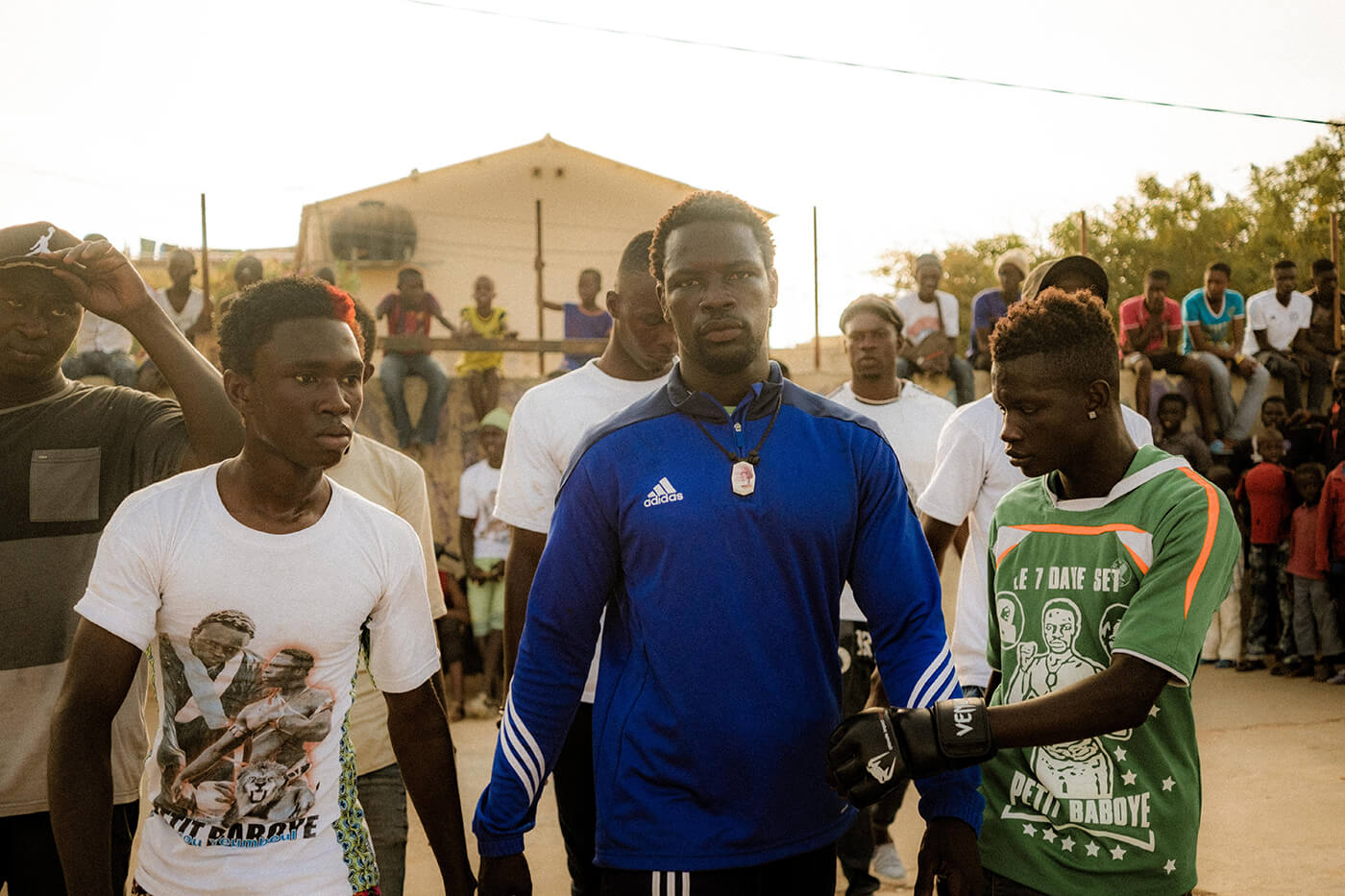
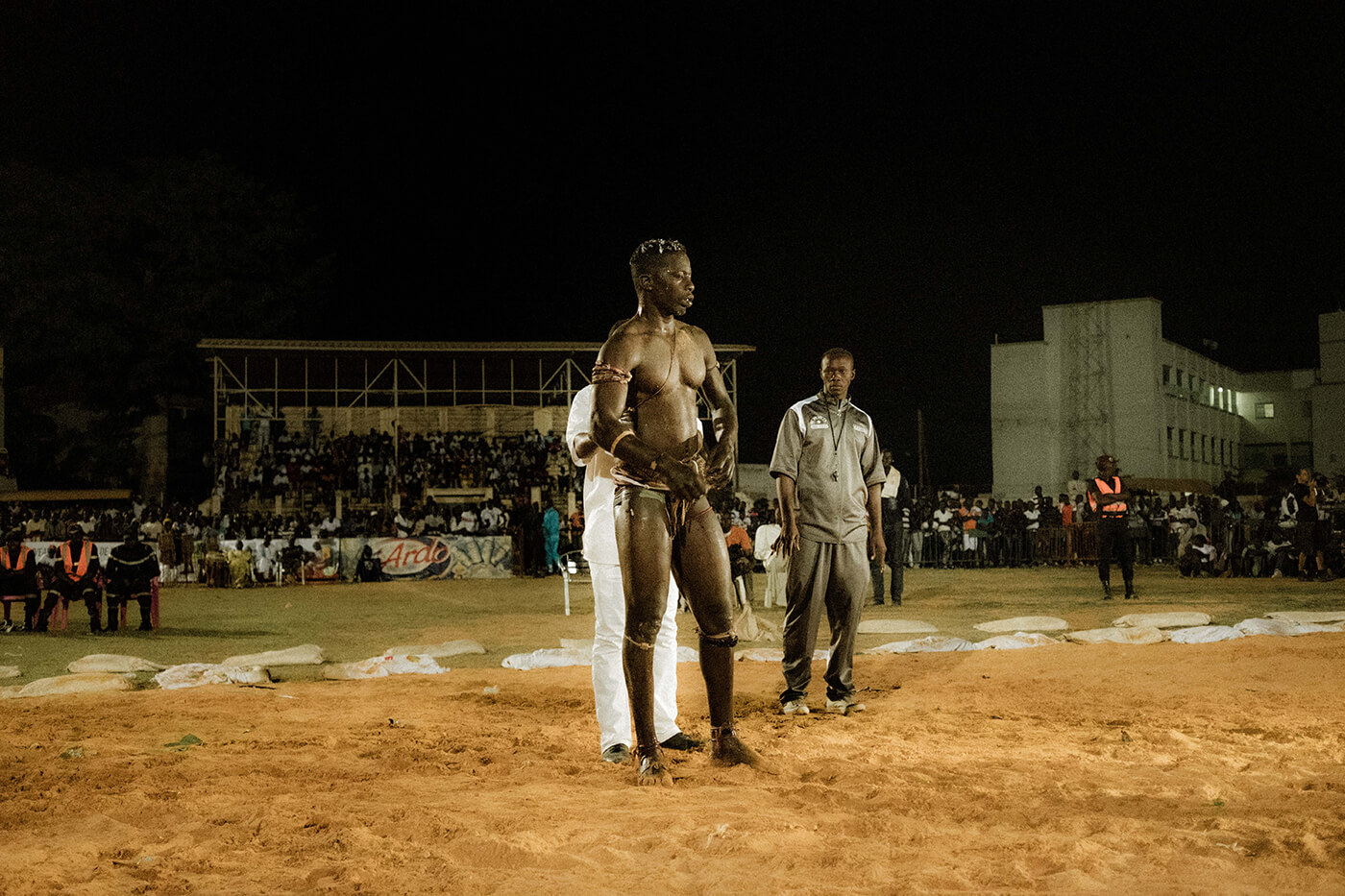
How would you describe your photography, and what drives you in creating it? Do you have particular methods or rituals?
I don’t have any rituals when I take photos beside one thing, which is really important to me. I like to come physically close to people and not to zoom in. This is an ongoing learning process, because it takes a lot of energy to get that atmosphere of trust. Usually I try to talk to people first. When I have permission (or at least the feeling I can start), I start taking close range photos even if it is a stranger. But when I feel I do not belong to a place, it is an inner fight before starting to take photographs and I am very unfocused.
Before I start filming I often like taking some photos to get used to the vibe of the people and make first contact. Or I sometimes end a filming session by taking time to take photos. I need that time with the small camera to pick out my favorite moments, or just collect what is not to captures on film and just for me.
It seems that most of your photography projects have been combined with travel – Senegal, North Korea, El Salvador… What impact has the pandemic’s travel restrictions had on this? Have you had to rethink your approach or where you find your inspiration?
The whole time I had possibilities, to work here in Berlin on some smaller money jobs for TV. At least some of the documentaries had been simply delayed and were not canceled. I started to take more photos of my surroundings here in Berlin during that time. The restrictions mostly forced me to stay at home, which is no bad thing for me and my family.
Your main job, and educational background is as a cinematographer / director of photography on films. Where does still photography fit amongst this?
When I think about a scene, I often start with one specific picture as the leading image. Later when it comes to storyboarding or directly to filming, I find more and more suitable (also necessary) perspectives in my head. Photography is part of the education of a cinematographer. In fact it is the basis. The experience you get by taking photographs of a specific topic or action, is a very good base of how you think a film. The demands are almost equal, because you always want to find out how the camera has to compliment the story best. Therefore you need to find out what kind of mood you need, where the camera starts and where it ends and most importantly, what information is better to hold out of the frame.
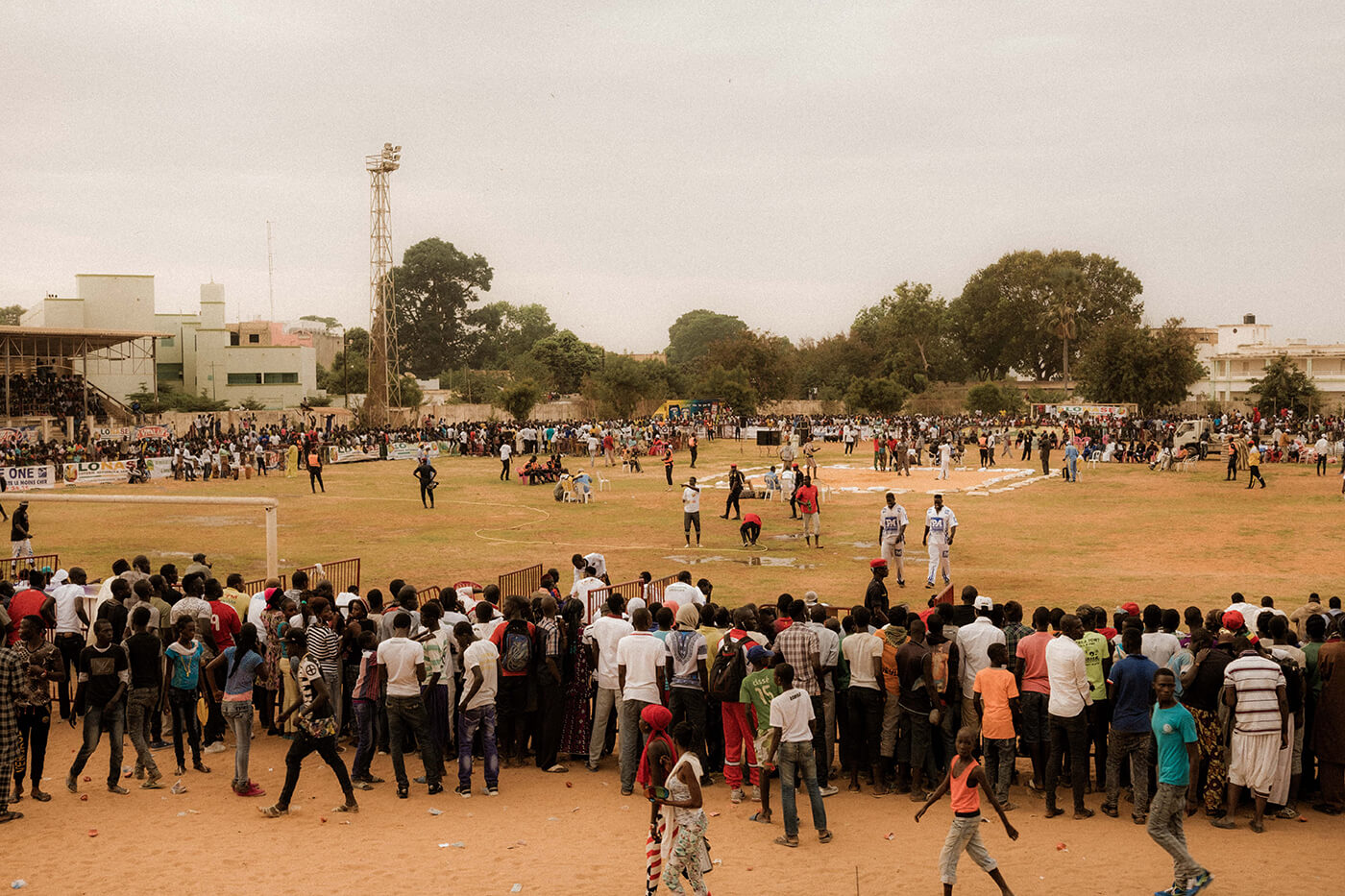
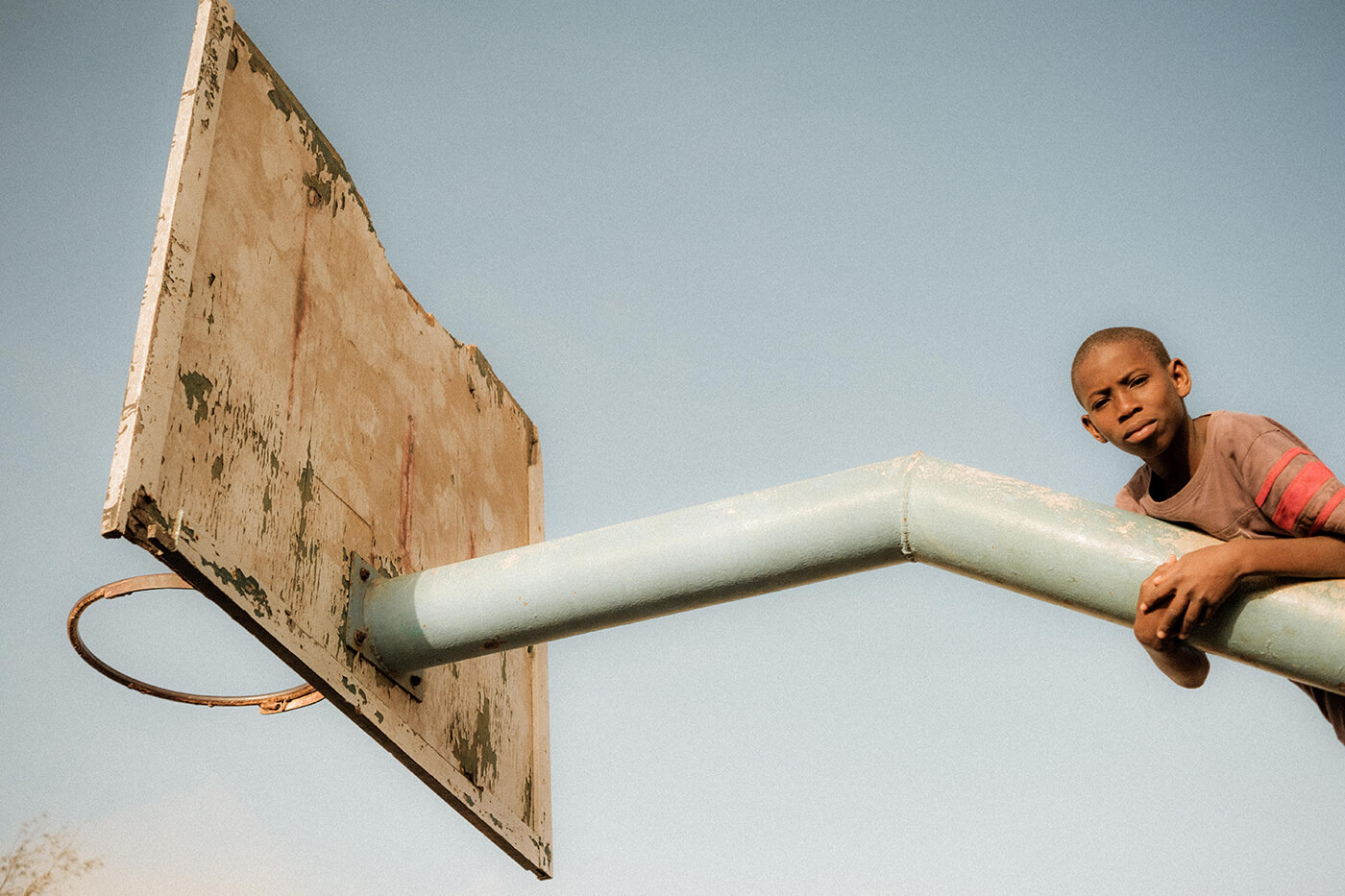
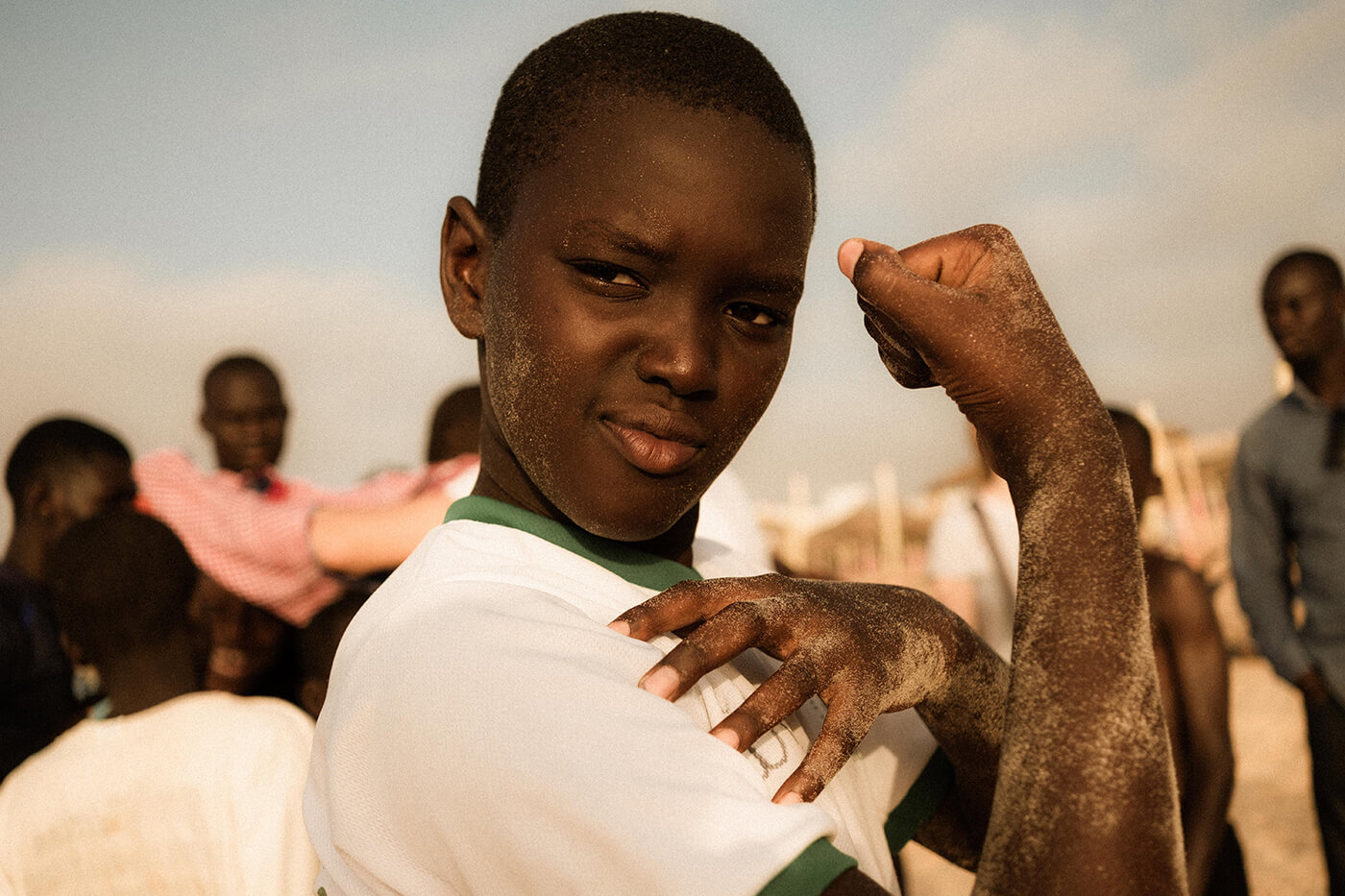
Do aspects of one compliment the other, or do you try to keep photography and cinematography quite separate?
It is pretty much integrated into my working life as a cinematographer for journalistic content, although my photographic approach is totally different to my filming. When I film in a foreign country, I take documentary photos for personal interest. I like collecting tiny parts of the whole story free of any editorial instruction or purpose.
Is there a single piece of advice you’d pass on to other photographers starting out, or that you wish you could share with your younger self?
Yes, start taking photos guided by your honest interests. Just follow your instincts and try break your own barriers step by step, in terms of daring to do something such as getting closer to strangers. That task will push the learning and failing process which is extremely individual. Compare your opinion of a series with the opinion of others and ask yourself again
and again, what you want to tell.
What would be your dream photography project?
I would really like to work on series in and around a circus. It does not have to be an exotic place. I am interested in how the members of a circus fulfill their goals and joy of life in comparison to an ordinary life. Family life in a circus in pandemic times could be the topic.
And finally, what’s keeping you busy right now Martin? What can we expect next?
I’m not working on a particular project at the moment. I’m studying a lot of photographers such as Rudi Meisel, Harald Hauswald, Larry Towell, Alex Webb, Robert Frank, Helga Paris, Joel Meyerowitz or recently Jill Freedman to get inspiration.
